Do you have a question about the Main Eco Compact System 15 and is the answer not in the manual?
Information on Building Regulations, Benchmark Commissioning Checklist, and Installer Notification Guidelines.
Guidelines for safe operation, including handling gas and flue gas hazards.
Recommendations for installation, maintenance, and handling the mains lead.
Detailed safety advice for handling, installation, and general operation.
Outlines responsibilities and liabilities of manufacturer, installer, and user.
States the manual is for installers of the Main Eco Compact System boiler.
Refers to the Flue Accessories Fitting Guide and sales literature.
Explains danger levels and symbols used in the manual for safety.
Lists abbreviations and terms used throughout the manual.
Details safety, performance, quality, certifications, gas category, and standards.
Provides general, electrical, and other specifications including dimensions and weights.
Illustrates boiler dimensions, clearances, and connection points.
Shows the electrical wiring diagram of the boiler with component keys.
Introduces the Main Eco Compact System as a wall-mounted condensing boiler.
Explains how the boiler works, including air-gas adjustment, combustion, and heating modes.
Lists and illustrates the main components of the boiler.
Describes the control panel layout and display symbols.
Lists the items included in the boiler's carton.
Details optional accessories available for the boiler.
Outlines regulations, codes of practice, and necessary documentation for installation.
Details gas/electrical supply, water hardness, bypass, and system control.
Guidance on selecting boiler location, clearances, ventilation.
Minimum clearances around boiler for installation & maintenance.
Guidelines for siting flue terminals, distances, plume dispersal.
Installation of horizontal flues & equivalent lengths.
Fitting flexible flue trims on the wall.
Use and fitting of terminal guards for flue terminals.
How to fit and position the flue deflector.
Refers to Flue Installation Guide for accessories.
Safe handling and lifting procedures for the product.
Unpacking boiler and initial preparation steps.
Refers to connecting diagrams and filling information.
Installation must follow regulations, codes, and manual.
Assembling boiler, connecting taps, pressure relief pipe.
Step-by-step fitting of pressure relief discharge pipe.
Connecting condensate drain pipework and priming trap.
Connecting telescopic flue and flue dimensions.
Installation of horizontal telescopic flue system.
Guidance on making electrical connections to the boiler.
Wiring boiler and external controls.
Procedures for flushing system and filling installation.
Importance of flushing and treating system per BS 7593.
Instructions for filling system and connecting filling links.
Ensures condensate trap is primed before commissioning.
General procedures and references for commissioning.
Preliminary electrical and general checks before commissioning.
Steps for commissioning: de-aeration, gas settings.
Explains de-aeration function to remove air from heating system.
Checking gas pressure, gas rate, and combustion.
How to check gas inlet pressure and gas rate.
How to check combustion performance via chimney sweep mode.
Setting boiler to max/min output for testing.
Handover procedures, user instructions, final checks.
Process of handing over boiler and documentation to user.
How to use boiler's control panel and display.
Boiler's start-up sequence.
How frost protection works and winter precautions.
General maintenance, safety, and annual servicing advice.
Annual servicing, checking water pressure, expansion vessel.
Steps for performing an annual service on the boiler.
How to check and maintain correct water pressure.
How to check and maintain the expansion vessel.
How to check the automatic air vent for leaks.
Checking burner and cleaning heat exchanger.
Specific component maintenance: electrodes, sensors.
Removing/replacing detection/spark ignition electrode.
Removing/replacing NTC flue sensor.
Removing/replacing flow and return sensors.
Removing/replacing safety overheat thermostat.
Removing/replacing pressure gauge.
Removing/replacing safety pressure relief valve.
Removing/replacing expansion vessel.
Removing/replacing gas valve.
Removing/replacing pump head only.
Removing/replacing complete pump assembly.
Lists error codes and their descriptions displayed on the boiler.
Basic checks before investigating error codes.
How error codes are displayed and what they indicate.
Systematic fault finding procedures for central heating.
Step-by-step fault finding for central heating issues.
Troubleshooting steps for specific fault scenarios (A to E).
Troubleshooting steps for specific fault scenarios (F to H).
Troubleshooting steps for specific fault scenarios (I to M).
Steps for safely decommissioning and removing the boiler.
Advises on correct disposal and recycling of the boiler.
Lists available spare parts with descriptions and part numbers.
Checklist for commissioning engineer for compliance.
Forms for recording annual service history and details.
Information on Building Regulations, Benchmark Commissioning Checklist, and Installer Notification Guidelines.
Guidelines for safe operation, including handling gas and flue gas hazards.
Recommendations for installation, maintenance, and handling the mains lead.
Detailed safety advice for handling, installation, and general operation.
Outlines responsibilities and liabilities of manufacturer, installer, and user.
States the manual is for installers of the Main Eco Compact System boiler.
Refers to the Flue Accessories Fitting Guide and sales literature.
Explains danger levels and symbols used in the manual for safety.
Lists abbreviations and terms used throughout the manual.
Details safety, performance, quality, certifications, gas category, and standards.
Provides general, electrical, and other specifications including dimensions and weights.
Illustrates boiler dimensions, clearances, and connection points.
Shows the electrical wiring diagram of the boiler with component keys.
Introduces the Main Eco Compact System as a wall-mounted condensing boiler.
Explains how the boiler works, including air-gas adjustment, combustion, and heating modes.
Lists and illustrates the main components of the boiler.
Describes the control panel layout and display symbols.
Lists the items included in the boiler's carton.
Details optional accessories available for the boiler.
Outlines regulations, codes of practice, and necessary documentation for installation.
Details gas/electrical supply, water hardness, bypass, and system control.
Guidance on selecting boiler location, clearances, ventilation.
Minimum clearances around boiler for installation & maintenance.
Guidelines for siting flue terminals, distances, plume dispersal.
Installation of horizontal flues & equivalent lengths.
Fitting flexible flue trims on the wall.
Use and fitting of terminal guards for flue terminals.
How to fit and position the flue deflector.
Refers to Flue Installation Guide for accessories.
Safe handling and lifting procedures for the product.
Unpacking boiler and initial preparation steps.
Refers to connecting diagrams and filling information.
Installation must follow regulations, codes, and manual.
Assembling boiler, connecting taps, pressure relief pipe.
Step-by-step fitting of pressure relief discharge pipe.
Connecting condensate drain pipework and priming trap.
Connecting telescopic flue and flue dimensions.
Installation of horizontal telescopic flue system.
Guidance on making electrical connections to the boiler.
Wiring boiler and external controls.
Procedures for flushing system and filling installation.
Importance of flushing and treating system per BS 7593.
Instructions for filling system and connecting filling links.
Ensures condensate trap is primed before commissioning.
General procedures and references for commissioning.
Preliminary electrical and general checks before commissioning.
Steps for commissioning: de-aeration, gas settings.
Explains de-aeration function to remove air from heating system.
Checking gas pressure, gas rate, and combustion.
How to check gas inlet pressure and gas rate.
How to check combustion performance via chimney sweep mode.
Setting boiler to max/min output for testing.
Handover procedures, user instructions, final checks.
Process of handing over boiler and documentation to user.
How to use boiler's control panel and display.
Boiler's start-up sequence.
How frost protection works and winter precautions.
General maintenance, safety, and annual servicing advice.
Annual servicing, checking water pressure, expansion vessel.
Steps for performing an annual service on the boiler.
How to check and maintain correct water pressure.
How to check and maintain the expansion vessel.
How to check the automatic air vent for leaks.
Checking burner and cleaning heat exchanger.
Specific component maintenance: electrodes, sensors.
Removing/replacing detection/spark ignition electrode.
Removing/replacing NTC flue sensor.
Removing/replacing flow and return sensors.
Removing/replacing safety overheat thermostat.
Removing/replacing pressure gauge.
Removing/replacing safety pressure relief valve.
Removing/replacing expansion vessel.
Removing/replacing gas valve.
Removing/replacing pump head only.
Removing/replacing complete pump assembly.
Lists error codes and their descriptions displayed on the boiler.
Basic checks before investigating error codes.
How error codes are displayed and what they indicate.
Systematic fault finding procedures for central heating.
Step-by-step fault finding for central heating issues.
Troubleshooting steps for specific fault scenarios (A to E).
Troubleshooting steps for specific fault scenarios (F to H).
Troubleshooting steps for specific fault scenarios (I to M).
Steps for safely decommissioning and removing the boiler.
Advises on correct disposal and recycling of the boiler.
Lists available spare parts with descriptions and part numbers.
Checklist for commissioning engineer for compliance.
Forms for recording annual service history and details.
| ERP Rating | A |
|---|---|
| CH Output (kW) | 15 |
| DHW Output (kW) | 15 |
| Efficiency (%) | 93 |
| Fuel | Natural Gas |
| Output | 15 kW |
| Efficiency | 93% |
| Warranty | 2 Years |
| Mounting | Wall-mounted |
| Type | Combination Boiler |


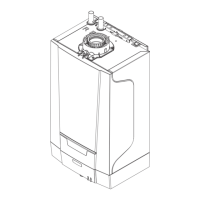
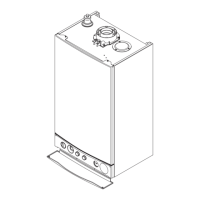
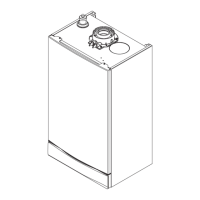
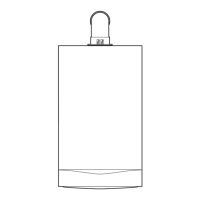



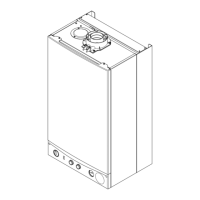

